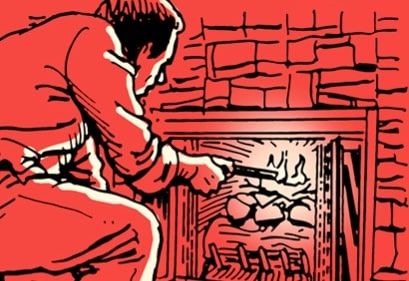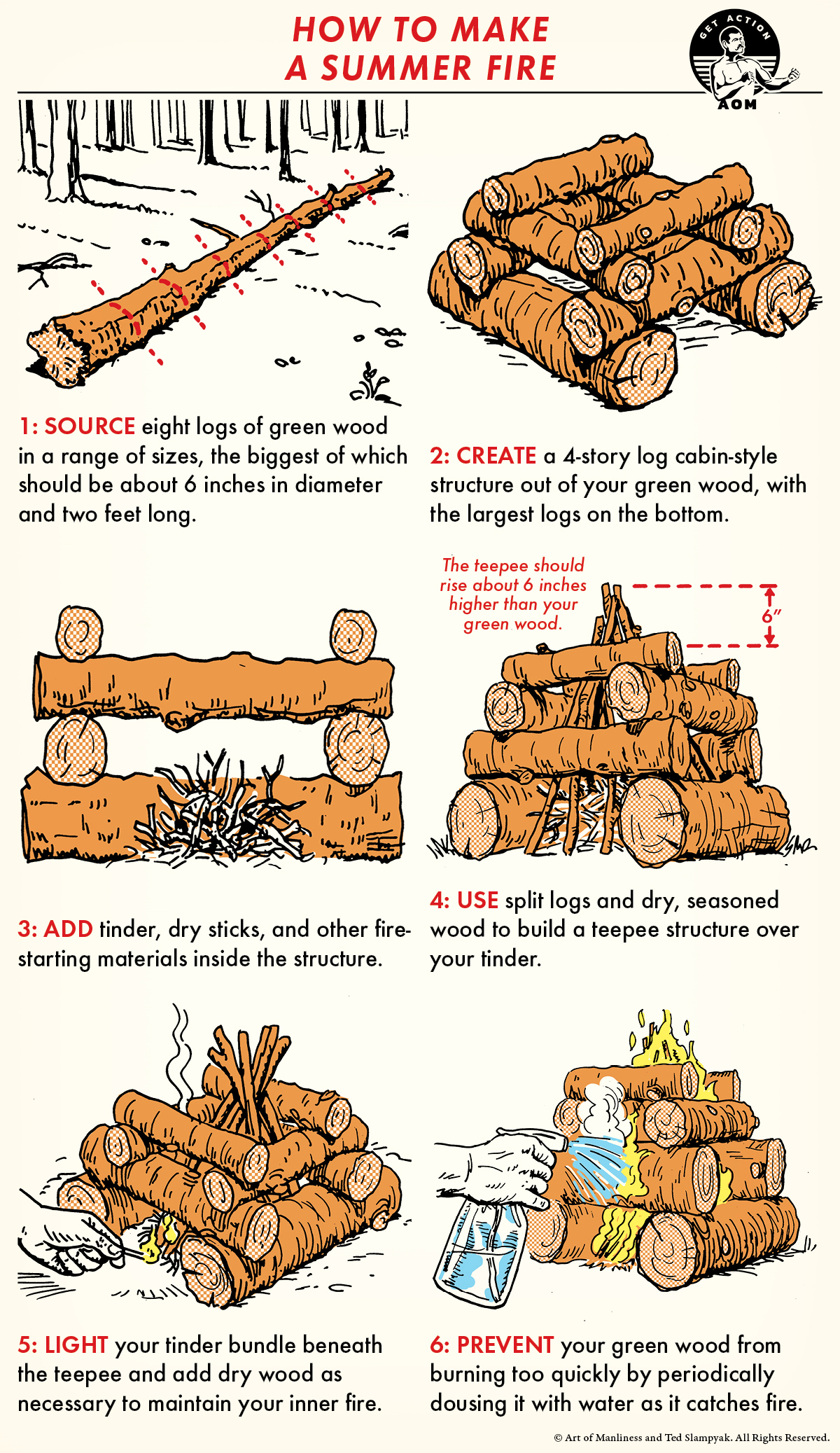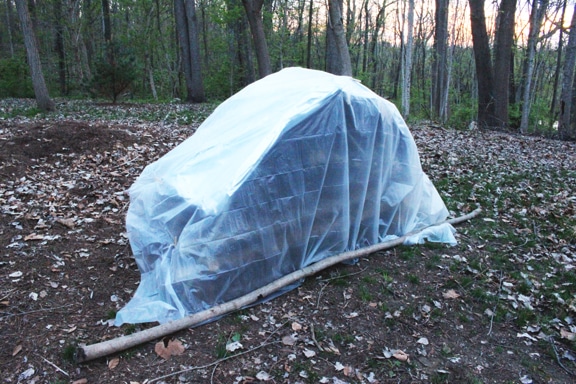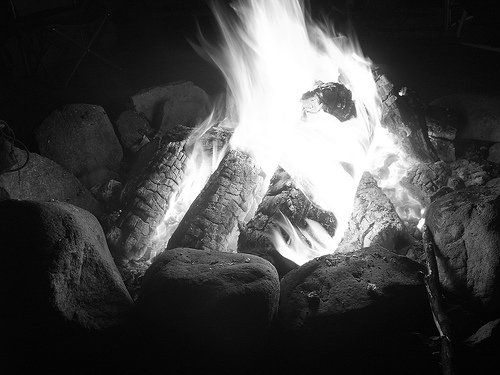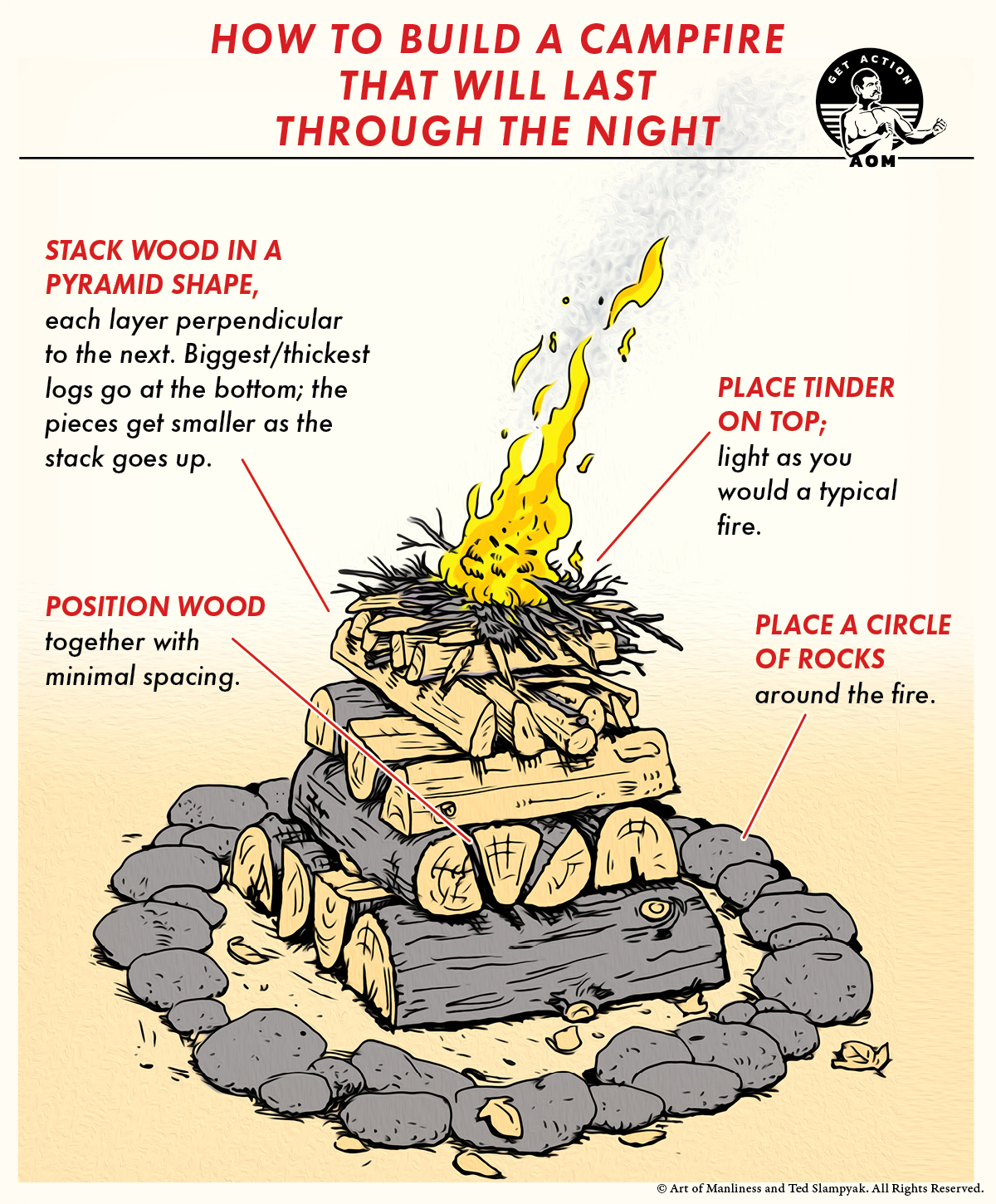
With our archives now 3,500+ articles deep, we’ve decided to republish a classic piece each Sunday to help our newer readers discover some of the best, evergreen gems from the past. This article was originally published in January 2021.
When it comes to wintertime adventuring, a campfire is what keeps you cozy and comfortable, and in a survival situation, alive. The downside of fire as a heat source, of course, is that it is consumable; it needs regular feeding to stay alive. This isn’t a big issue in the daytime, when you can keep adding wood to your fire at will. But at night, constantly having to tend to the flames will greatly fragment and disrupt your sleep.
Creating a fire that is self-sustaining, requires minimal maintenance, and keeps burning as long as possible is thus obviously quite advantageous. No fire lasts an entire night through without any tending, but there is a way to create one that will persist for hours without being refueled, allowing you to maximize your stretches of unbroken slumber.
There are various ways to build a long-lasting fire, most of which involve needing logs so big they will likely necessitate cutting down a tree. A more accessible way to build a durable fire is to utilize the upside-down lay. This campfire structure, also handy for building a fireplace fire that won’t make your house smoky, inverts the typical fire lay.
With a typical campfire, you start the lay with the smallest tinder, then move into bigger kindling, and then add larger logs once that setup has ignited. When you’re building a fire that will last through the night, however, you don’t want to have to rise from your sleep to manually add the logs yourself; you want to be able to fix it and forget it by building a structure that ignites the logs “automatically.” You do that by making your biggest logs the base of the lay, then adding layers of thinner wood and kindling, on up in a pyramidal structure, atop which sits your tinder. In a reversal from your classic campfire lay, the fire burns downward. As each layer of the pyramid burns, it sinks and falls, igniting the layer below it: the tinder burns and ignites the kindling, which ignites the larger pieces of wood, which eventually ignites the logs. The fire feeds itself.
In addition to using the architecture of your fire lay in a way that facilitates a long, tending-free burn, you can also set up other aspects of its layout to increase its longevity as well. Fire relies on oxygen to combust; the more of it, the faster the fire burns; the less of it, the slower it burns. So the key is to strike a balance between allowing your fire enough air to keep burning, but not so much that it burns too quickly. You’re going for more of a slow smolder. Placing the wood close together and creating a ring of rocks around the fire will help you create judicious limitations to its airflow.
Since you’re not going to be actively babysitting your fire (though you’ll be sleeping nearby), take extra fire safety precautions — clearing the area around your fire, not building one in dry or windy conditions, etc.
Depending on conditions in the environment and your wood, and how big you make your pyramid, this fire could burn for up to 4 hours without any active maintenance. After that, the embers and hot rocks will continue to provide warmth, and you’ll likely wake up to a bed of still-hot coals, ready for cooking!
Learn more skills of the master fire-builder:
How to Make a Swedish Torch (another way to create hours-long warmth)
How to Build a Roaring Campfire
9 Ways to Start a Fire Without Matches
How to Start a Fire in the Rain
How to Make a Dakota Fire Hole




